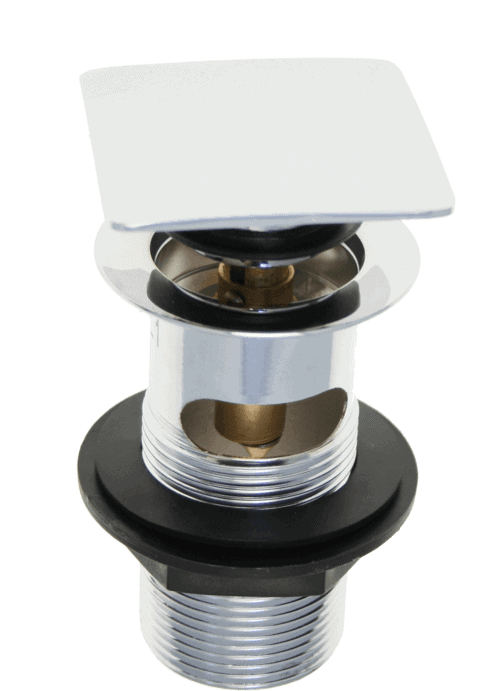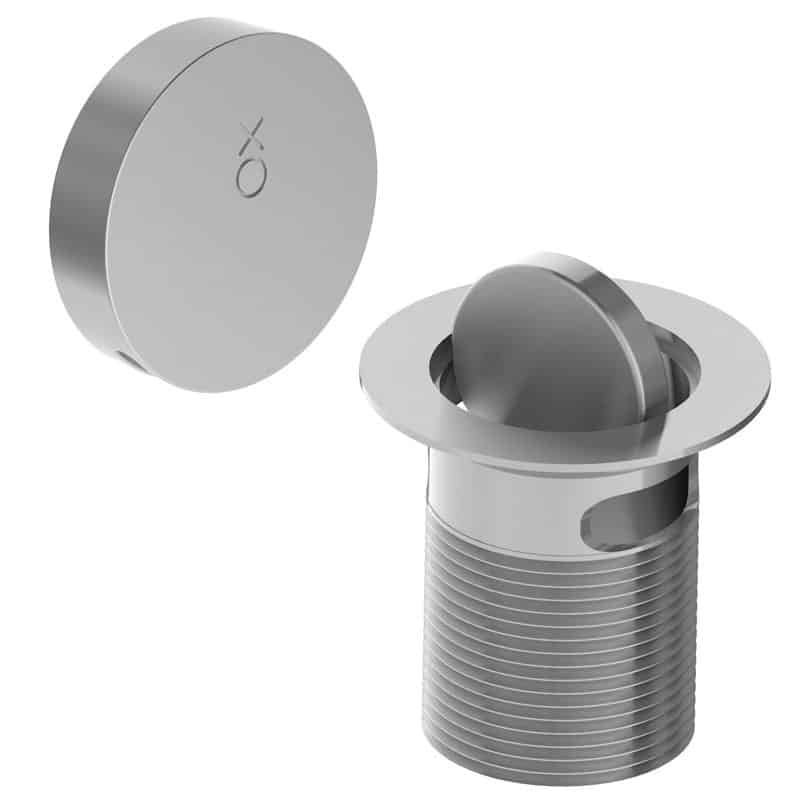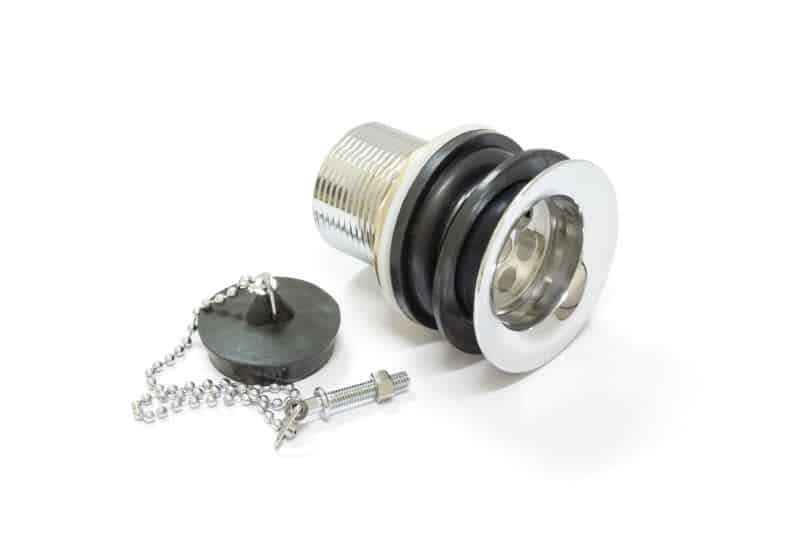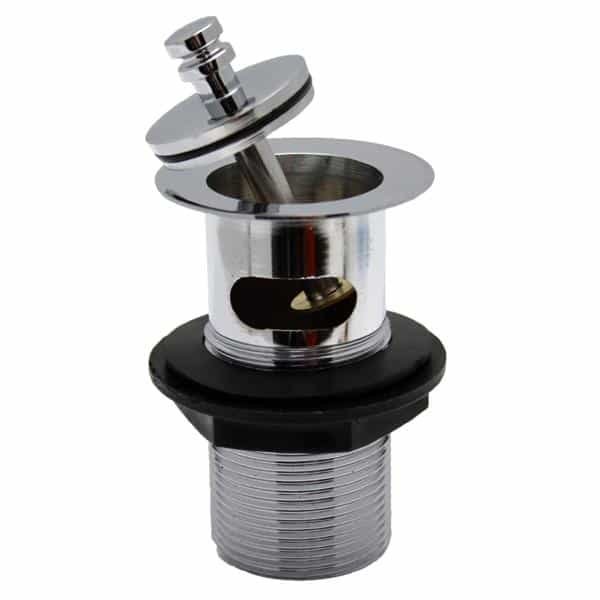A basin waste is an essential part of any plumbed basin. It helps to drain away water from your sink. It connects the waste of your basin to the release waste pipe. This pipe allows water to drain away safely. Sometimes the waste is known as a “plug” or “plug hole” in the plumbing world. It makes up a part of the whole waste. It consists of connecting to your pipework and a way to “plug” and keep water in your basin. A basin waste can often be ignorable when carrying out a bathroom renovation. It performs another function, too. It allows filling the sink with water by blocking.
What Is a Basin Overflow?
A basin overflow is a small hole inside the basin that stays near the rim. While the sink begins to get full, it drains away from the water. If you unintentionally leave the tap on, it can protect you from flooding your bathroom.

Choosing Basin Waste
Buying a basin is sometimes confusing. We have to understand our requirements, suitability & types of the category before buying basin wastes. There are specific types of basin waste for particular needs, and you have to ensure the waste you select has been designed for your specific kind of basin.
All basins need waste, which should fit tightly inside the standard hole in your washbasin through which wastewater exits. Experts recommend buying slotted basin waste if your washbasin has an overflow and basin waste does not have a basin. We have to buy a basin waste that matches the type and design of our washbasin. We should also be careful if we want perfect finishing & good decor.
| Size of Basin Waste outlet | Basin wastes will be either 32mm or 40mm in diameter. |
| Basin Waste Color | Basin Wastes are offered in various colors. Some of them are Chrome, Black & Rose Gold. You can also match the basin waste color with the color of your bathroom taps. |
| Basin Waste Shape | Basin Wastes are commonly round in shape. But they may also have a Push-button waste that is always square. |
| Basin Waste Material | Various materials are used in making basin wastes, like stainless steel, brass, and plastic. Experts recommend stainless steel for its longevity and strength. |
Different types of Basin Waste?
Many different kinds of basin waste are available, and each type has a unique design and functional properties.
Slotted Waste

A slotted basin waste has a slot, allowing any overflowing water to run into the main trash. So it is clear that a slotted basin waste is very suitable for an overflow basin. The slot in the waste permits any excess water from the surge to drain into the waste pipe. These basin wastes have a variety of designs, including turnover and pop-up models.
Unslotted Waste
If your basin doesn’t overflow, you’ll need not slot basin waste. Like a slotted waste, it also has a variety of designs, including turnover and pop-up models.

Chainstay waste
A chainstay basin waste contains a few elements which are familiar to us. These are used in older-style bathrooms and public toilets. People have had less interest in this type of waste in recent years, including a plug on the end of a chain. Chainstay wastes are only appropriate when your basin has a pre-drilled chainstay hole and are almost always slotted because of an overflow.

Click Clack waste
Click-clack waste is a popularly used type of basin waste. It is also called Push Button, Clicker, or Sprung waste. The operation of this basin waste is simple. It’s almost like pressing a button. Just push the stopper down; the waste pops up gently with a click sound. Again push the plug down, and the waste clamps down with a soft clack sound. This click-clack mechanism is covered. There is no visible chain. The simple design of the click-clack basin waste makes it easy to install. It is effortless to use, and maintenance is easy too. It is a trendy type of basin waste with less quick drainage than plug and chain waste. Click-clack waste looks clean and bright.

Flip Top or Spinner waste
Flip Top or Spinner basin wastes are not commonly used. These are also known as flip-over garbage. They have a great design and look shiny. Modern bathrooms become more decorated by using these wastes. The initial control is through rotating a stopper. The stopper is disc-shaped. It may be rotated, flipped, or repositioned to seal or reveal the drain completely. You cannot remove the disc. They only allow the basin to be filled or drained with a bit of pressure on one side of the spinner. The stopper is typically left lying flat. The basin waste will work as a plug-in in this position, holding water in the sink. You will disallow water from running off. You need to revolve it for the water to drain. You can spin the rotation plug 180 degrees clockwise for opening. You can also rotate it 180 degrees counter-clockwise to close the drain. The flip-top is a highly stylish basin waste option.

Pop-Up waste
Pop Up basin wastes use a bar or lever. A push-pull rod lever mechanism operates these basin wastes. This bar or lever activates the waste at the back of the basin tap. Pull the lever or bar up to block the waste. You can fill the sink with this. Then the lever or bar is pushed down to open the waste. It allows the sink to drain. Pop-up waste is a widespread choice. Its design is trendy & operation is easy. You don’t need to put your hand in dirty water to drain the sink for using this basin waste.
The inconvenience is that Pup-Up basin waste needs regular cleaning. It also has a limited lifespan. Sometimes it will be stuck when the plug insert is pushed down, and it can be annoying and often requires a whole new waste replacement.

Pop Down Waste
The design of pop-down waste is tremendously attractive. It distinctly appeals to those who want a seamless plug and waste. It is more convenient to use than a pop-up basin waste. At the sealed position, the pop-down waste sits lower. When open, it sits flush so that the water drains.
Pop-down basin waste has no accidental sealing due to the flush design of the plug. But one thing you need to ensure about the tap spout. The tap spout shouldn’t use overhead directly; any high pressure can push the inner plug down to seal. This waste is easier to clean as You can remove the whole internal cartridge and remove blockages easily.
These wastes are much more expensive than basin waste. Like pop-up waste, pop-down wastes have a limited lifespan.

Plug and Chain waste
The plug and chain basin waste is the most popular. It has been used widely for centuries and is still mostly recommended for entry-level bathrooms. People are very much familiar with its function. Plug and chain wastes can drain the water faster than any other type of waste, and it is simple to use and effective.
You can commonly slot a plug and chain waste for use. It is often seen in traditional-style bathrooms. Sometimes a plug and chain waste needs a chainstay. A chainstay is a small hole in the basin where you can secure the chain at the opposite end of the plug. There is no extra hole in many of the modern basins. You should check it before you buy a plug and chain basin waste. If your basin has a spot for connecting the chain, this basin waste is a proper choice. The pin connects to a metal chain. The chain is attached to a stay. It is impossible to remove the plug from the chain.
The lifespan of plug & chain basin wastes is long.

Plug and Waste
Plug & waste is traditional & still, but it has an appeal. It is very much easy to install. It has excellent availability and removes the fear of a stuck plug. The grating of this waste makes it hard to clean. The plug is separate, so it needs to be placed somewhere you won’t lose it.
You can go for a standard plug and waste if your budget is limited, and it is the least expensive option.

Free Flow waste
Free Flow basin wastes keep your waste always open. This waste is similar to the click-clack or pushes button waste, except there is only one difference. Free flow waste does not stop; instead, it is always open. That’s why it is known as free-running waste. There is no ‘plug’ system to be able to fill up your basin, and it is only used for draining water from your basin and letting it slowly escape. Free-flow basin wastes are primarily used in smaller bathroom basins or cloakrooms. It can prevent overfilling small basins or basins with no overflow feature because the waste is free-flowing, and water cannot be contained. It helps to eliminate the risk of flooding.
Free Flow basin wastes are simple & work directly, and it is one of the most user-friendly wastes & perfect for basins that do not have an overflow. Free-flowing waste is highly recommended for pubs, clubs, and public toilets, where taps can often be turned on accidentally.

Captive Or Anti-Tamper Wastes
Captive or Anti-Tamper Waste combines plug and chain & click-clack waste. It’s a blend of old-fashioned & new wastes. You cannot remove the plug from the basin because the plug is fixed to a bar attached to the waste fitting. It makes captive or anti-tamper wastes ideal. It can be used for businesses or public toilets.

Basin Waste Fitting
Before installing a basin waste, you should unpack and examine your basin waste immediately after buying. Permanently shut off your water from the mainline.
Tools/Apparatus you’ll need:
- Sealant gun
- Hexagonal nut
- Washers
- Silicone sealant
Check the Basin: Ensure your new basin is completely clean and dry before installation. It is very much crucial. It will help you to make a perfect, solid & watertight seal.
Ready Your Waste: Sometimes, basin wastes are assembled from the manufacturing company. If you buy a waste assembled, you should disassemble it first. You need to unscrew the hexagonal nut and remove the rubber washer.
Align Your Waste: You should be very careful when inserting the basin wastefully into the cutout of your basin. If you use a slotted one, align the slot with your basin’s overflow.
Sealing Time: Always try to make sure that your waste sits flush in your basin. You need to apply silicone around the top of the waste thread. You can use a sealant gun also. Use this to push silicone into the gaps between the basin and the trash.
Reattach the Trap: A rubber washer can push sealant further into the gaps. Screw the hexagonal nut on tightly. It helps to put pressure simultaneously on the top side of the waste. Reattach the trash to the bottle trap. You should make test for leaks before use.

